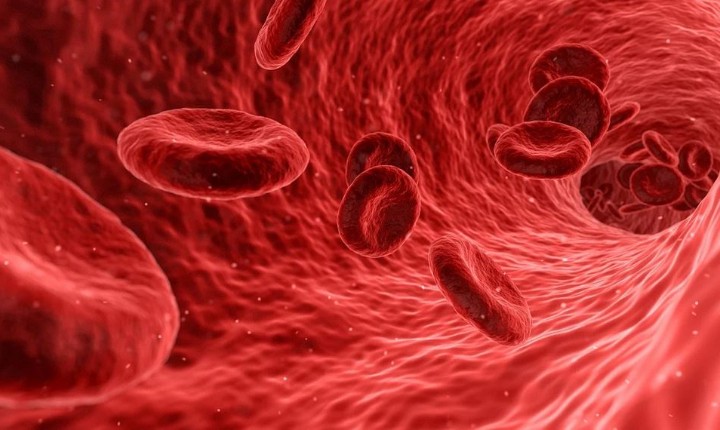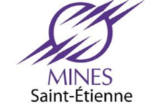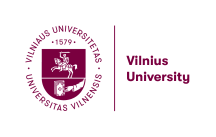International workshop Mathematical Modeling in Hemodynamics
Le 8 décembre 2021
Faculté des Sciences et Techniques
Université Jean Monnet
Salle du conseil
Multiscale Mathematical and Computer Modeling for Flows in Networks: Application to Treatment of Cardiovascular Diseases
Université Jean Monnet, Vilnius University - Mines Saint-Etienne
Research Federative Structure MODMAD FED 4169 - ICJ UMR CNRS 5208
International workshop
Mathematical Modeling in Hemodynamics
Saint-Etienne, December 8, 2021
The workshop is devoted to an important trend in biomathematics, mathematical modeling in hemodynamics.
This workshop continues the series of conferences on multiscale methods and applications in engineering and biology. Such methods combine microscopic and macroscopic descriptions of the phenomena and are usually based on asymptotic and numerical analysis of the microscopic model equations. The application of these methods allows creating new more adequate and more precise models in biology and medicine. Also, the workshop will present new results in computer modeling of the blood flow in the heart, thrombus formation and electricity of the heart.
The workshop will bring together the well-known specialists in the topic and young researchers and students. The theoretical results will be presented together with the numerical and computer experiments.
Organizers:
S.Avril, Mines Saint-Etienne, France
G.Panasenko, Univerity Jean Monnet, France and Vilnius University, Lithuania
K.Pileckas, Vilnius University, Lithuania
Speakers :
|
13h00 |
S. Avril, France |
|---|---|
|
13h35 |
Yu. Vassilevski, Russia |
|
14h10 |
V. Salamatova, Russia |
|
14h45 |
A. Belyaev, Russia |
|
15h20 |
A. Aliseda, USA |
|
15h55 |
P. Berg, Germany |
|
16h30 |
O. Flores, Spain |
|
17h05 |
N. Kozulinas, Lithuania |
|
17h40 |
D.Iftimie, France |
|
18h15 |
F.Chardard, France |
Abstracts:
- COMPUTATIONAL MODELING OF THE EFFECTS OF HEMODYNAMICS ALTERATION ON ANEURYSM GROWTH IN THE ASCENDING THORACIC AORTA
S. Jamaleddin Mousavi, Jayendiran Raja, and Stéphane Avril*
Mines Saint-Etienne, University of Lyon, University Jean Monnet, INSERM, Saint-Etienne, France
The thoracic aorta is complex and susceptible to localized dilation, especially from the root of the ascending aorta to the aortic arch and it is referred to as ascending thoracic aortic aneurysms (ATAAs). Three aetiologies predominate in human ATAAs: (i) genetic causes in heritable familial forms, (ii) an association with bicuspid aortic valves (BAV), and (iii) a sporadic degenerative form linked to the aortic aging process. In condition (ii) related to BAV, hemodynamics is altered and this is believed to induce damage in the aortic wall, the resulting aortic dilation potentially leading to dissection or rupture. In the hemodynamics assumption, changes of the local wall shear stress (WSS) distribution induce a cascade of signalling events leading to arterial weakening and further development of the aneurysm. Several mechanisms were proposed to explain arterial weakening: a first one is an increase in wall permeability leading to transmural advection of plasma proteins which could interact with matrix and cell components and induce elastin degradation; a second one is a decrease of the contractility of smooth muscle cells (SMCs) leading to deficient mechanosensing and mechanoregulation. Our objective is to evaluate these two assumptions in patient-specific models.
Different modeling frameworks were proposed to capture fundamental features of arterial growth and remodelling (G&R) responses to altered hemodynamics based on the constrained mixture theory. However, existing models did not consider complex patient-specific geometries of ATAAs and they did not integrate the layer-specific properties in their models to distinguish the media and adventitia layers. Moreover, fluid-solid-growth simulations previously developed by different authors for cerebral or abdominal aneurysms did not fully couple G&R model with hemodynamics. Consequently, the objective of the present work is to fully couple a constrained mixture G&R model of ATAA with a computational fluid dynamics to study the effects of altered hemodynamics on ATAA growth. We will present the numerical framework combining computational fluid dynamics coupled with arterial growth and remodelling (G&R) to model the adaptation of patient-specific ascending thoracic aortas to altered hemodynamics during aneurysm development. Eventually we will show examples of simulations where the predictions of aneurysm growth and of stiffness evolution are in good agreement with experimental data on the same patient.
- Modelling of blood plasma coagulation in microfluidic capillaries
Yuri Vassilevski (INM RAS, Sechenov University), Kirill Terekhov (INM RAS), Anass Bouchnita (University of Texas at Austin) Vitaly Volpert (University of Lyon 1, RUDN)
Abstract.In this talk we address our finite volume multi-physics model for coagulation of blood plasma flow validated by laboratory experiments.
The dynamics of the blood plasma occupying a domain is described by the incompressible Navier-Stokes equations with a hydraulic permeability term.
The hydraulic permeability corresponds to a porous clot composed from fibrin polymer and forms
the right-hand side coupling the flow with the coagulation process.
The coagulation model consists of unsteady reaction-advection-diffusion equations for
concentrations of all reactive components except fibrin polymer and platelets.
Fibrin polymer satisfies a simple reaction equation, whereas the platelets follow the
nonlinear advection-diffusion of traffic flow. We assume that
- blood plasma is incompressible Newtonian fluid, and complex rheology of blood is ignored;
- polymerized fibrin does not move with the flow, i.e., the clot cannot detach and travel with the flow;
- the blood vessel boundaries are non-porous and rigid, and their poro-elasticity is ignored.
Bouchnita A., Terekhov K., Nony P., Vassilevski Y., Volpert V.
A mathematical model to quantify the effects of platelet count, shear rate, and injury size on the initiation of blood coagulation under venous flow conditions.
PLoS ONE 15(7): e0235392, 2020.
Yu.Vassilevski, K.Terekhov, K.Nikitin, I.Kapyrin.
Parallel Finite Volume Computation on General Meshes. Springer International Publishing, 1st ed. 2020
- Hyperelastic membrane modelling based on data-driven constitutive relations
Victoria Yu. Salamatova, Alexey A. Liogky (Sechenov University)
We present data-driven modelling of membrane deformation by a hyperelastic nodal force method. We assume that constitutive relations are characterized by tabulated experimental data instead of the conventional phenomenological approach. As experimental data we use synthetic data from the bulge test simulation for Neo-hookean and Gent materials. The numerical study of descriptive and predictive capabilities of our approach demonstrates very good results of the data-driven modelling provided that the input tabulated data are expanded to a wider region of strain characteristics. Two methods for such expansion are suggested and numerically studied. Different loadings of hyperelastic membranes are successfully recovered by our approach.
- Continuum model for thrombosis in aneurysms and recirculation zones
Alexei Belyaev (Moscow State University M.V.Lomonosov), Anass Bouchnita (University of Texas at Austin), Vitaly Volpert (University of Lyon 1, RUDN)
Aneurysms of saccular shape are usually associated with a slow, almost stagnant blood flow, as well as a consequent emergence of blood clots. In the presented study we address biomechanical and biochemical effects that take place during thrombosis in aneurysms and blood recirculation zones. The study is focused on the role of transport and accumulation of blood cells, coagulation cascade, and the hematocrit-dependent blood rheology. Numerical simulations indicate an important role of RBCs in spatial propagation and temporal dynamics of the aneurysmal thrombus. We considered thrombosis initiation by blood cell interaction (RBC-platelets, platelet–platelet) and determined different regimes of clot growth and clot structure depending on geometry, biophysical, and biochemical parameters.
The results are published in [Phys. Fluids 33, 093314 (2021); doi: 10.1063/5.0057393].
- Optimization of Left Ventricular Assist Device therapy: A combined Eulerian-Lagrangian computational model to reduce thromboembolic adverse events
Alberto Aliseda, Department of Mechanical Engineering, University of Washington, Seattle, USA
(aaliseda@uw.edu)
Introduction. Left Ventricular Assist Devices are growing in frequency and importance in the treatment of medical-refractory heart failure. The incidence of thromboembolic events is the first cause of mortality and morbidity for these patients, despite third generation pumps greatly reducing in-pump thrombosis. To understand this problem, we study LVAD-induced hemodynamics, and the role that hemodynamics has in preconditioning platelets to activate and aggregate, leading to incipient thrombus formation that can propagate throughout the circulation, explaining the high incidence of thromboembolic events in the absence of in-pump thrombosis.
Methods. A combined Eulerian and Lagrangian computational modeling approach is used to simulate blood flow and platelet trajectories in the left ventricle, LVAD inflow cannula, outflow graft and aortic arch. The exposure to shear stress accumulated by platelets along their trajectories in the ventricle, LVAD outflow graft and ascending aorta is computed, together with their residence time. Statistical analysis of millions of surrogate platelets is used to estimate thrombogenecity, establishing relative risk stratification for the different treatment choices.
Results. A systematic optimization of surgical parameters (inflow cannula angle, inflow cannula depth of insertion, outflow cannula anastomosis angle, outflow cannula diameter) and medical management (LVAD speed, patient, MAP, aortic valve opening frequency) has been conducted based on Lagrangian metrics, showing that the thrombogenecity of LVAD therapy can potentially be reduced. These metrics allow for quantitative comparisons among the options available to the medical team. Guidelines of optimum ranges of therapy configurations, and definition of “high risk” configurations to actively avoid have been proposed.
Conclusion. Computational hemodynamics show the potential to analyze the Lagrangian environment experienced by blood, and in particular by platelets. The risk-benefit analysis of many surgical and medical choices in LVAD therapy can be done with these quantitative tools derived from computational simulations of the Navier-Stokes equations and Lagrangian trajectories. Reducing thromboembolic events continues to be the next frontier in durable MCS therapy for advanced heart failure.
- Multimodal modelling of intravascular hemodynamics
Philipp Berg (University of Magdeburg)
Intracranial aneurysms, which are local dilatations of the cerebral vessels, are characterized by a complex and very specific progression in combination with highly individualized therapy procedures. To gain the required knowledge with respect to intracranial aneurysm hemodynamics, numerical methods are increasingly used for evaluation and treatment optimization. However, it has been shown that their broad clinical acceptance is limited due to numerous model-based assumptions.
Within this presentation, techniques to overcome this situation are demonstrated. Specifically, the patient-specific aneurysm hemodynamics are critically assessed and evaluated with a focus on verification and validation. After ensuring a reliable usability of the numerical methods, two clinically relevant research areas are addressed. On the one hand, the individual aneurysm rupture risk is assessed based on multimodal evaluation techniques, and on the other hand, therapy complications observed in reality are examined using virtual endovascular methods to minimize their occurrence in future interventions. Finally, the developed techniques are transferred to other diseases of interest such as arteriovenous malformations.
- Numerical simulation of left atrial flows: assessing risk of thromboembolism.
Oscar Flores , Dept. Bioengineering and Aerospace Engineering, Universidad Carlos III de Madrid (SPAIN)
Atrial fibrillation (AF) is one of the most important public health problems and a significant cause of health care costs in western countries. Patients with AF are at high risk of developing left atrial (LA) thrombosis, particularly in the LA appendage (LAA), leading to an increased risk of thromboembolism (i.e., 5x higher risk of stroke). In this talk, I will present a computational framework for the analysis of the LA hemodynamics, a collaborative effort of a multidisciplinary team of engineers, physicist, and physicians from four institutions (UC3M, Hospital Gregorio Marañón, University of Washington, University of California San Diego). Results from N=10 patients will be analyzed, to discuss the relationship between the residence time in the LAA and the kinematic and geometric parameters of the heart, followed by a short discussion of other ongoing projects related to the LA hemodynamics.
Bio:
Oscar Flores is an Associate Professor at the Bioengineering and Aerospace Department of the Universidad Carlos III de Madrid (UC3M), where he works in several problems related to fundamental phenomena appearing in unsteady flows, and their applications in different branches of engineering. Before arriving to the UC3M in 2011, he graduated in Aerospace Engineering at the Polytechnic University of Madrid and received graduate training in computational fluid mechanics and turbulence. Upon completion of his graduate training, he worked as a research Associate in the University of Washington (2008-2011), where he worked on stably stratified turbulence in the surface layer of the atmosphere.
- Mathematical modeling of hemodynamics in the left atrium during atrial fibrillation
Sigita Aidietiene (Santaros Klinikos), Audris Aidietis (Santaros Klinikos), Oleg Argatov (Vilnius University), Sergey Borodinas (Vilnius Tech), Kristina Kaulakyté (Vilnius University), Nikolajus Kozulinas (Vilnius University), Grigory Panasenko (University Jean Monnet and Vilnius University), Konstantinas Pileckas (Vilnius University), Vytenis Sumskas (Vilnius University)
The objective of the investigation is to predict the thrombus formation in the left atrium appendage (LAA) during the atrial fibrillation. We assume that it depends on the geometry of LAA. Providing the numerical simulations of the blood motion in the LAA we detect the stagnation zones for various shapes of the LAA using the Navier-Stokes equations which are solved with COMSOL package.
- On the incompressible α-Euler equations in the exterior of a vanishing disk
Dragos Iftimie (University Lyon 1)
We consider the α-Euler equations in the exterior of a small fixed disk of radius ε. We assume that the initial potential vorticity is compactly supported and independent of ε, and that the circulation of the unfiltered velocity on the boundary of the disk does not depend on ε. We prove that the solution of this problem converges, as ε->0, to the solution of a modified α-Euler equation in the full plane where an additional Dirac located at the center of the disk is imposed in the potential vorticity.
This is joint work with V. Busuioc, H. Nussenzveig Lopes and M. Lopes Filho.
- Numerical solution of the viscous flows in a network of thin tubes
Eric Canon (University Jean Monnet), Frédéric Chardard (University Jean Monnet)
A non-stationary flow in a network of thin tubes is considered. Its one-dimensional approximation was proposed in a paper by G.Panasenko and K.Pileckas [1]. It consists of a set of equations with weakly singular kernels, on a graph, for the macroscopic pressure. A new difference scheme for this problem is proposed. Several variants are discussed. Stability and convergence are studied theoretically and numerically. Numerical results are compared to the direct numerical solution of the full dimension Navier-Stokes equations both in transient and periodic cases.
Panasenko G. P., Pileckas K., Flows in a tube structure: equation on the graph, Journal of Mathematical Physics, Vol 55: 081505, 2014.
|
|
|
|
|
|
|









